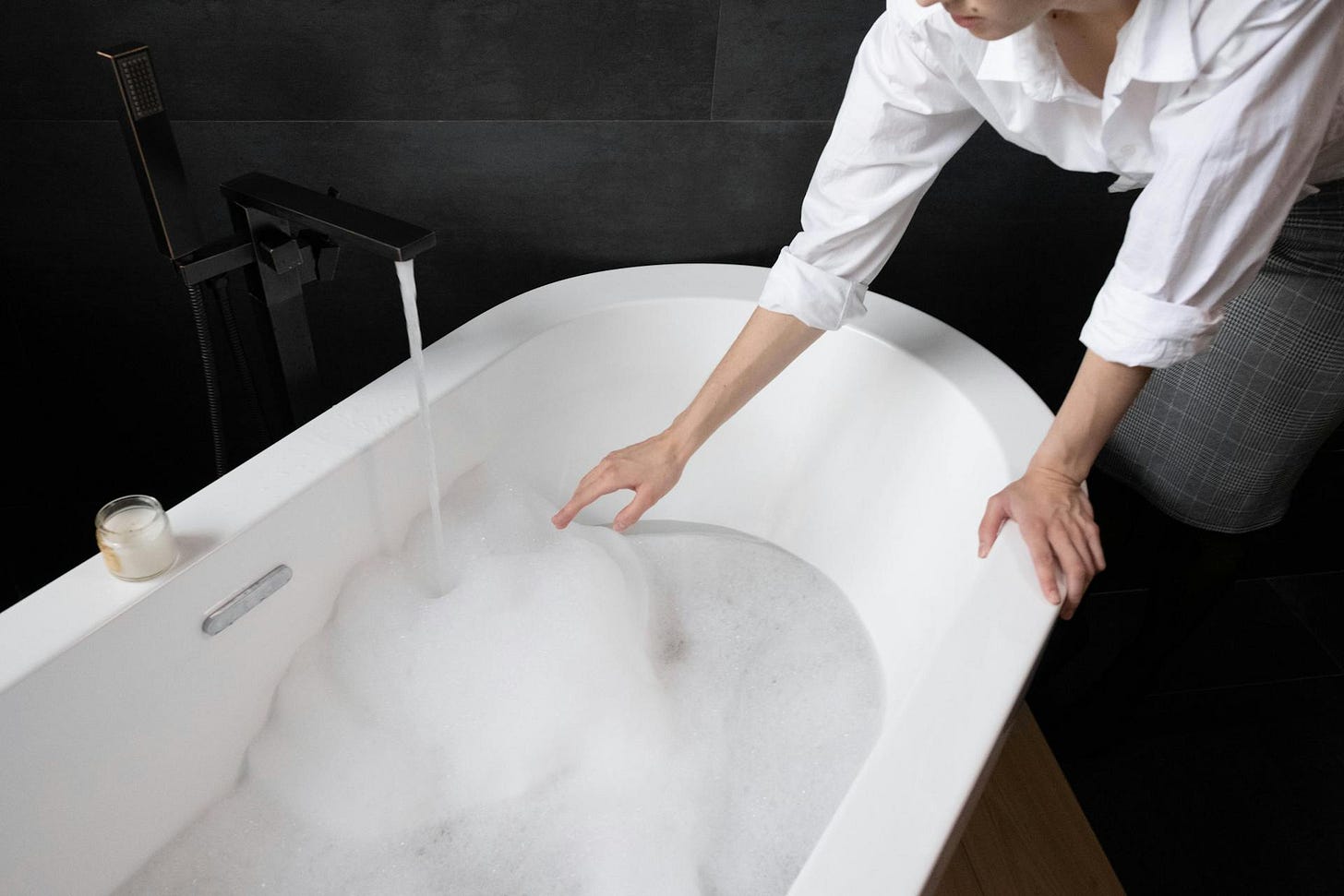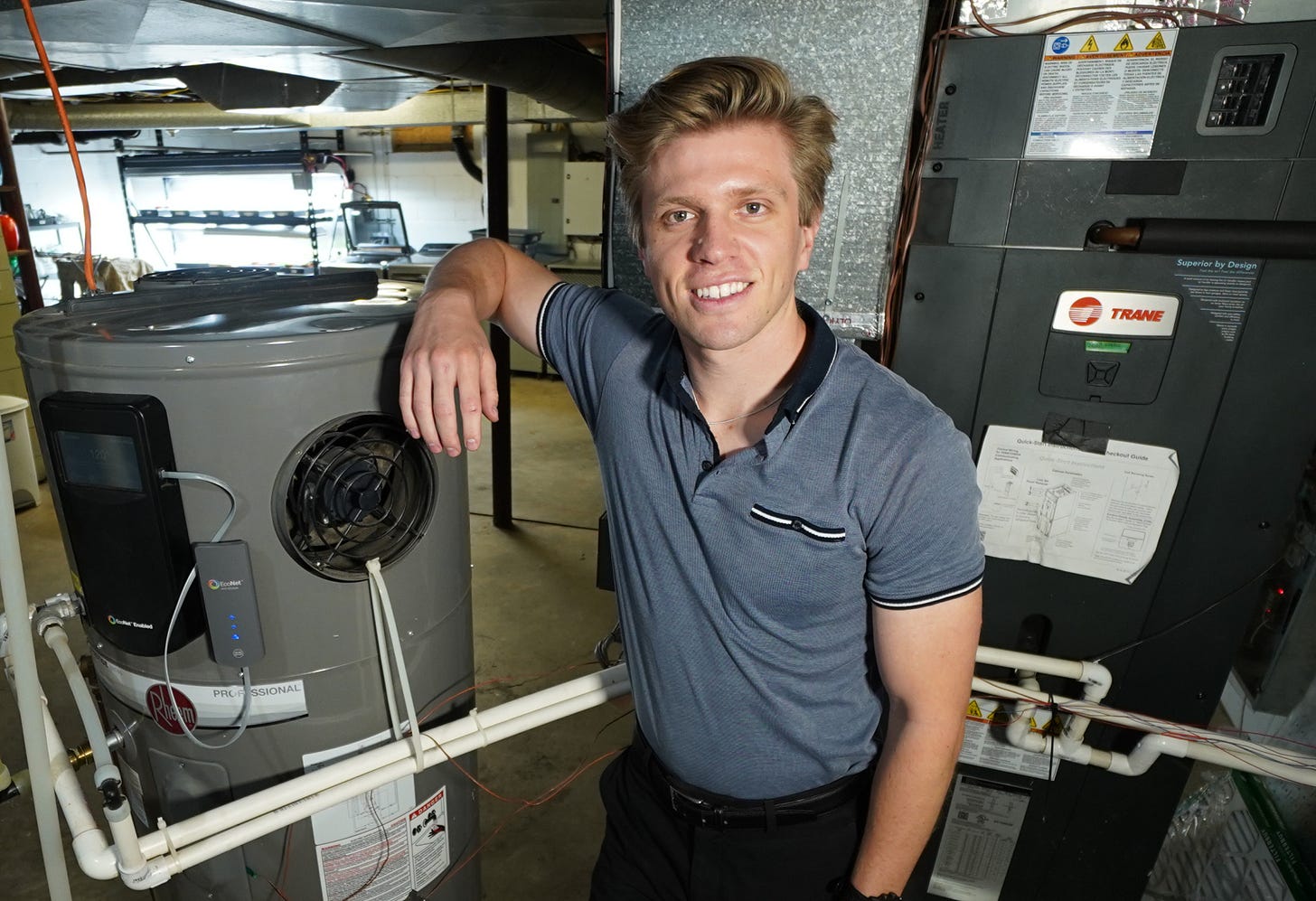Want a battery for your home? Your hot water tank is a great start
Save money and help balance the grid – with the thermal storage solution you might already own
Photographers like to say that the best camera is the one you have with you. Well, the best battery might be the one that’s already in your house. In people’s cupboards, under their stairs, in attics and garages all around the world lie energy storage devices that they rarely ever think about: hot water tanks.
A mere means to an end, you might think. Hot water tanks are surely just cumbersome necessities for those who have a heating device that can only heat water relatively slowly – meaning they need a store of some kind to gather and hold enough hot water for a shower or bath.
But to some, hot water tanks are a big opportunity. “We can really increase the intelligence of water heaters without much effort,” says Levi Reyes Premer, a PhD student at Purdue University, who has come up with an algorithm that turns hot water tanks into grid-balancing devices capable of saving homeowners hundreds of dollars.
Because there are so many hot water tanks already out there, they represent potentially hundreds of gigawatt hours of thermal energy storage in the US alone, according Kevin Kircher, one of Reyes Premer’s professors at Purdue University. Separately, in 2023, researchers in Australia calculated that household hot water tanks there could soak up as much renewable energy as two million home batteries.
The idea is simple enough. When there is cheap surplus electricity on the grid – for example when there’s a lot of wind or solar generation – it’s better to use that electricity rather than let it go to waste. Heating up a water tank uses a relatively large amount of energy, perhaps as much as a few kilowatt hours. So, why not elect to do that when electricty is cheap and abundant?
The concept of grid-interactive water heaters is nothing new. But it has yet to take off in a big way. One sticking point is that you ideally want to heat water tanks at times that make the most sense for end users, say an hour or two before they need that hot water. There’s little sense in heating it at 2am if someone works nights and usually showers in the late afternoon. It’s also more difficult to work with heat pump water heaters versus older, less efficient, electric resistance heaters because the heat pump heaters can’t be cycled on and off as quickly. Anticipating usage well in advance is, therefore, especially useful for those devices.
If this, then heat
Reyes Premer’s algorithm offers a solution by predicting hot water usage household by household – so the system will only heat water when two conditions are met: electricity is cheap and the occupants are likely to need hot water soon. Predictive pre-heating.
The technology relies on data from existing temperature sensors inside hot water tanks and an inlet temperature measurement. This latter data would come from a single sensor in a district or city. You basically want to know the rough temperature of water running through pipes in the ground because it allows you to more accurately work out what a given temperature drop in a person’s water tank corresponds to: a high, medium or low hot water-use event. Once you know that, you can understand and model their daily patterns.
“We can really increase the intelligence of the water heaters without much effort,” says Reyes Premer. He adds that this analysis doesn’t have to take place in the cloud but could occur within the home, to protect people’s privacy. (Data on people’s water usage habits can be extremely revealing about their health and lifestyles.)

Reyes Premer and colleagues have tested the idea in a real home near to Purdue University’s campus that researchers use to evaluate experimental technology such as this. During a month-long trial, their algorithm predicted the occupants’ hot water use with almost 100% accuracy. Details of how the system works were published in a conference paper last month. Reyes Premer estimates the technology could save US homeowners between $80-200 per year, at current electricity prices.
The work caught my eye because, two years ago, I wrote about EnergyCloud – a start-up in Ireland that offers to heat people’s hot water tanks for free as a means of tackling energy poverty while also balancing the grid during periods of high wind energy generation. Their approach involves installing a remote control so that EnergyCloud can activate hot water heating when surplus renewable energy is available – often at night. Occupants get a text message notifying them in advance so they don’t manually heat up their water instead and miss out on the freebie.
Reyes Premer says he is already talking to heat pump water heater companies about how they could adjust or update the software on their devices to allow for remote control of water heating, which would make his idea possible at scale. I ask why there’s a need for his algorithm, though – why not just occasionally heat up those water tanks overnight when electricity tends to be cheaper?
The latest flex
“For most households […] pre-heating at night would make sense,” Reyes Premer acknowledges. But he stresses the benefits of an even more agile system. Surplus energy might be around in the middle of the day in some locations, such as when there is high solar generation in California, for example. And some people might be on time-variable tariffs, which can fluctuate multiple times in a single day.
If you can carefully select which water tanks to heat up and when – based both on electricity prices and also when specific homes tend to use the bulk of their hot water – then you can create a much more intelligent, responsive system, suggests Reyes Premer.
Others have developed technology in a similar vein – such as Hawaii-based start-up Shifted Energy. “The thesis for us was to build a software layer that could aggregate those water heaters to provide the same exact grid services that a battery or a solar inverter could provide,” one of the firms co-founders told Canary Media in 2023.
The challenge is in rolling out solutions like this across a significant number of homes. Ideally, domestic heating appliance manufacturers would make their devices accessible to these kind of smart controls. But such accessibility has sometimes required government intervention in the past.
Reyes Premer continues to work on his water tank solution. He hopes to set up a future test of the technology in multiple real dwellings – perhaps as many as 100 homes, if he can convince a water heater manufacturer to work with him on it.
Further reading on this week’s story
The UK’s Hot Water Association, an industry body, has published a report advocating smart controls for household water tanks, as a means of balancing the electricity grid.
A paper published in February describes a solar and hot water tank-based system designed to predict hot water usage. The researchers tested the setup in a real house in Portugal.
Heat pump training providers Heat Geek, who have a popular YouTube channel, recently demonstrated an experimental system that uses a heat pump and “nano store” to heat water like a combi boiler does, more or less instantly. This is one possible alternative to a setup that requires a large water tank.
Heat batteries can be used centrally, as they are in Helsinki. The last coal plant in the Finnish capital ceased operations earlier this year. The city’s district heating system is now served, in part, by a one gigawatt hour heat battery.
Update: Added the item on Helsinki to the “Further reading” section.
Thanks for reading! If you enjoyed this story, don’t forget to share it with your friends and colleagues. You can also subscribe to The Reengineer and follow me on Bluesky.



